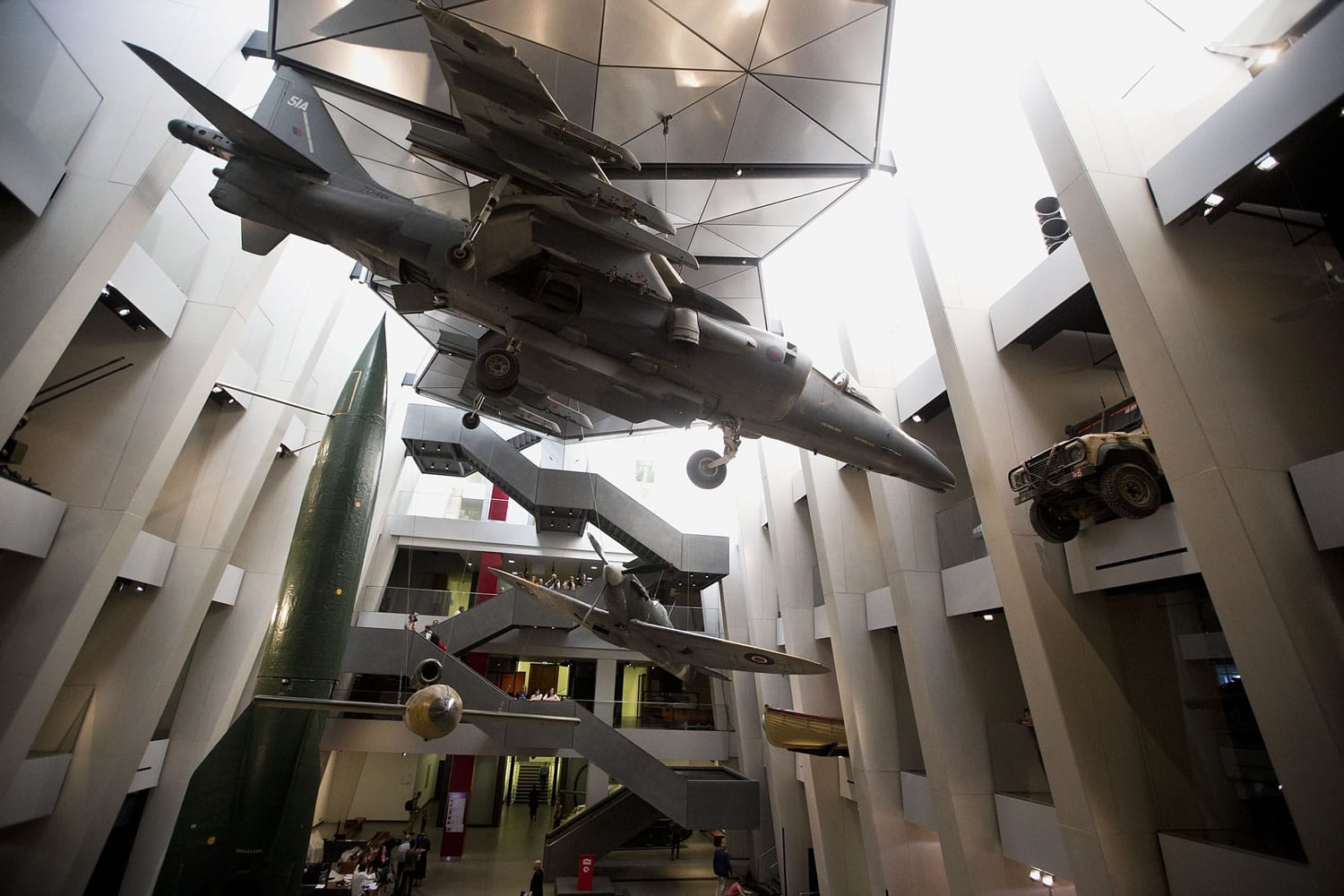LONDON — It’s an iconic scene of Britain at war: Thousands of Londoners huddled in Underground stations as German bombs rained down.
But this is not the 1940s Blitz — it’s World War I, more than 20 years earlier.
For most people, the Great War evokes images of mud, gas masks and the trenches of the Western Front. The Imperial War Museum wants to expand that view. A century after the conflict began, the London museum aims to provide a new perspective on “the war to end all wars.”
Senior historian Terry Charman said Wednesday that many people are surprised to learn that London was bombed — first by zeppelins, then by planes — and that 300,000 people sought shelter in subway stations.
“They say: ‘Air raids? Really?’ ” Charman said. “I think we see the First World War very much through the prism of the trenches of the Western Front. You forget that there was a home front.”
Reclaiming stories of the home front is one of the missions of the museum, which reopens Saturday after a six-month closure for a $70 million renovation.
The museum was founded in 1917, as the war still raged, to preserve the stories of those who were fighting and dying. It retains that goal, as well as its “Imperial” moniker, a relic of a vanished British Empire.
In other ways the museum has modernized. It now covers recent conflicts, including those in Iraq and Afghanistan, and includes an impressive collection of old and new military hardware. From the ceiling of the building’s new atrium hang a Spitfire fighter plane, a Harrier jump jet, a V1 rocket and more.
But the museum’s curators are just as interested in human stories. The World War I galleries move from the battlefront to the home front, to show how the first “total war” shook society from top to bottom.
The permanent exhibition includes more than 1,300 objects — from weapons and uniforms to diaries and letters — and alternates between the big picture and small details. It’s hard not to be humbled by the sheer scale of the slaughter. After war was declared in August 1914 — with Germany and Austria-Hungary on one side and Britain, France and Russia on the other — 7 million men marched off to war. By December, 1 million of them were dead.
Multimedia displays capture the vast tragedy of the Battle of the Somme, which saw 20,000 British soldiers killed in one day. Visitors learn about tanks, planes and other technological innovations that changed the course of the war. They share space with crude weapons that suggest the almost medieval savagery of trench warfare, including catapults to fling grenades and an iron-headed club for crushing skulls.
Many visitors will find the small, personal items especially moving. Soldiers complain of boredom, rats, lice and cold in letters home from the trenches. The wallet of a soldier killed in battle holds faded photos of his wife and children. In a letter, 9-year-old Alfie Knight begs to be allowed to enlist because “I am very strong and often win a fight with lads twice as big as myself.”
All the words seen and heard in the exhibition come from the wartime period. The exception comes in the final room. The last word is given to Harry Patch, the final known survivor of the trenches, who died in 2009 at age 111.
“I’ve tried for 80 years to forget it,” he said. “But I can’t.”



